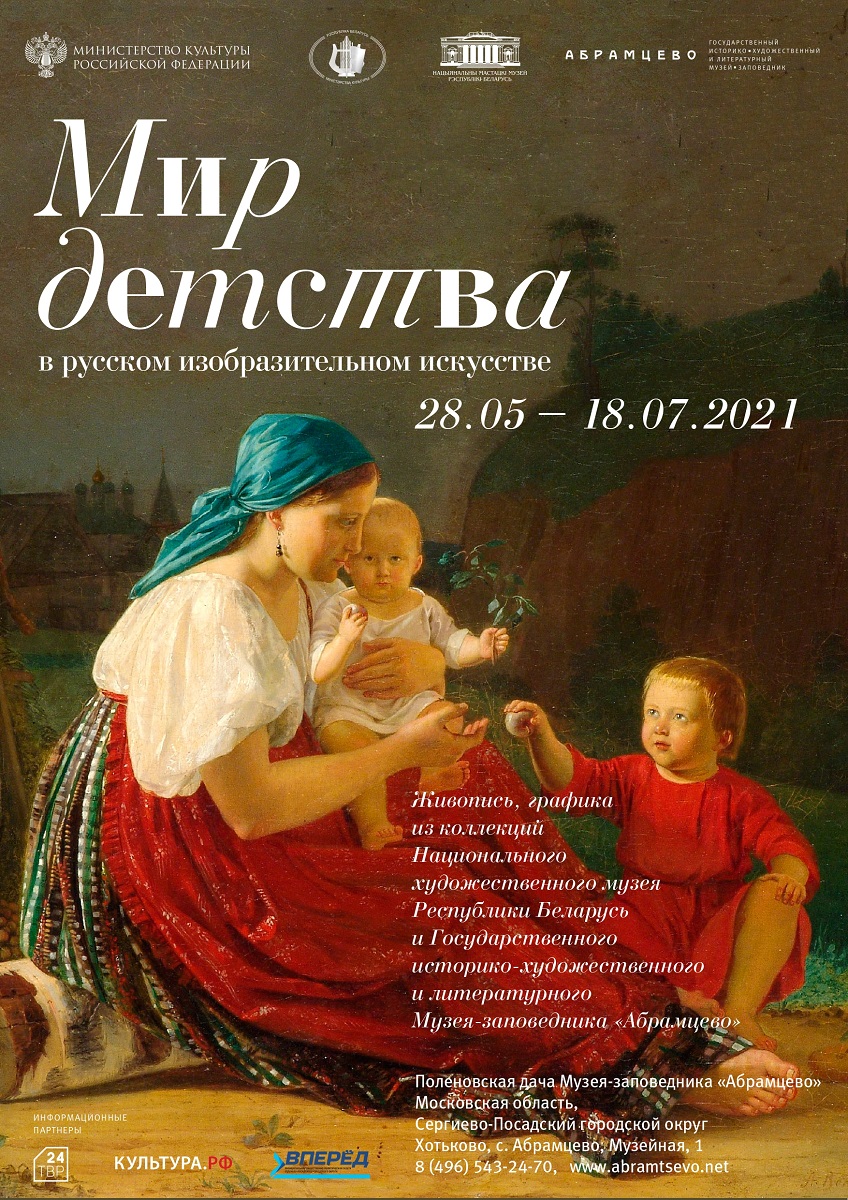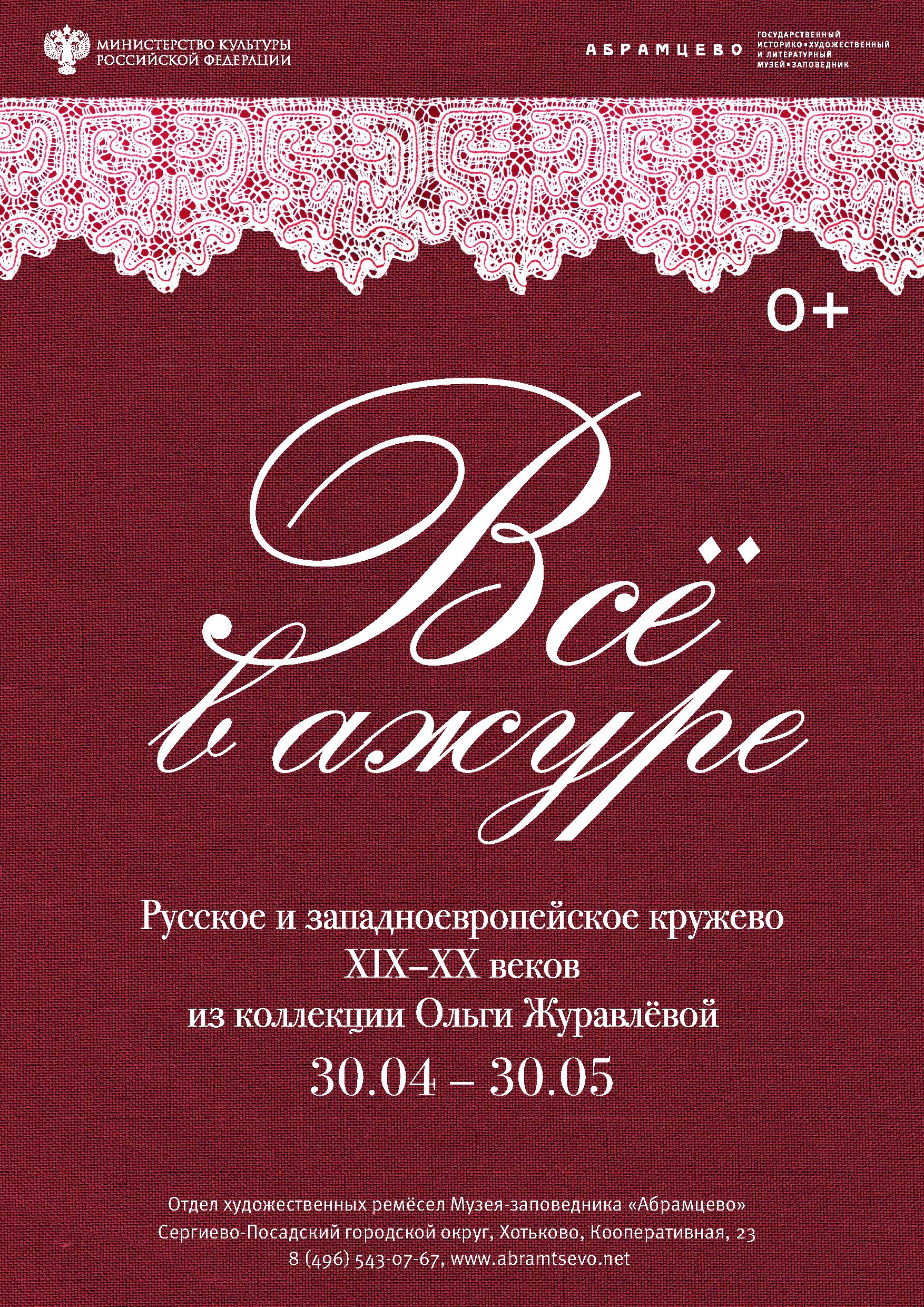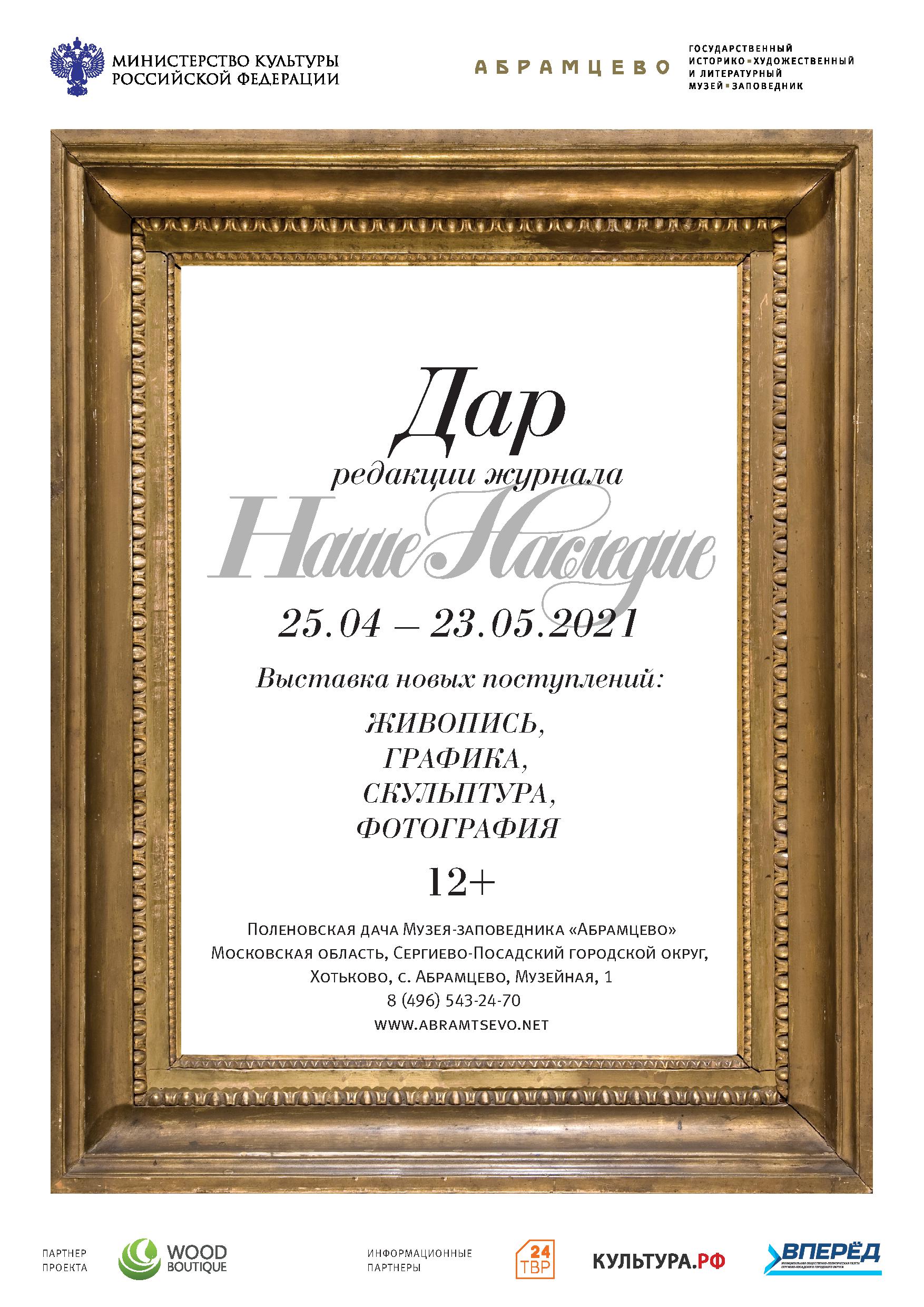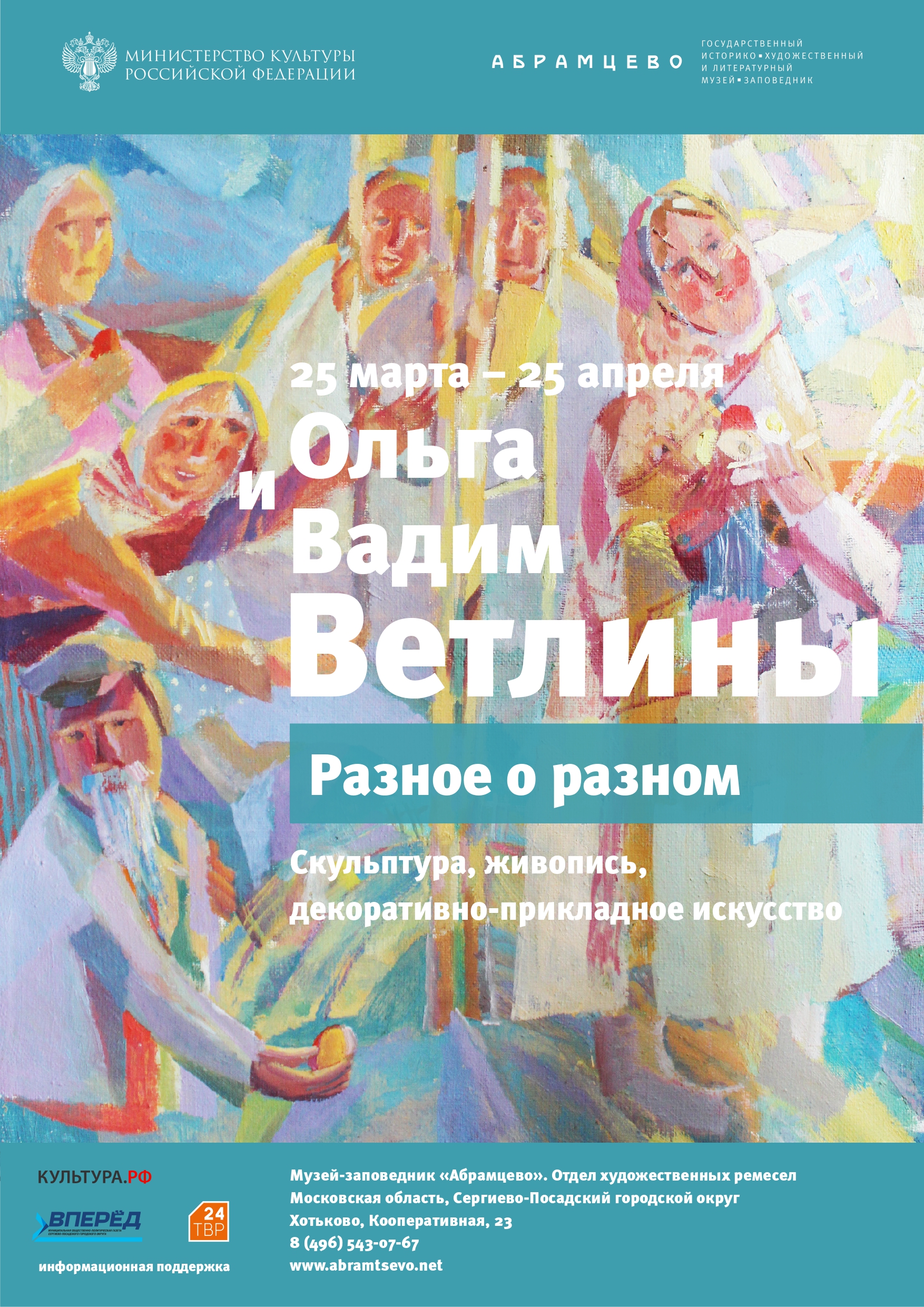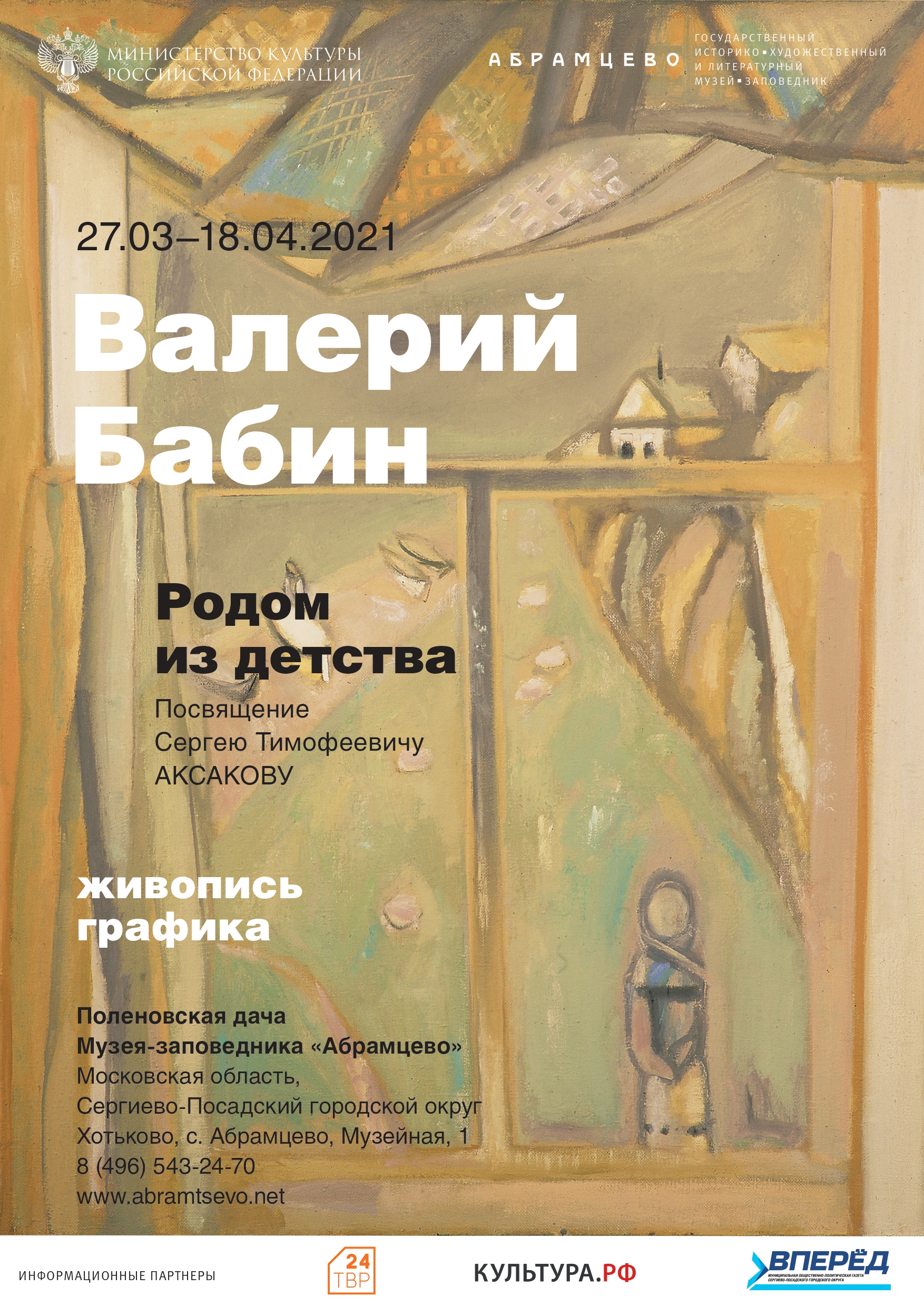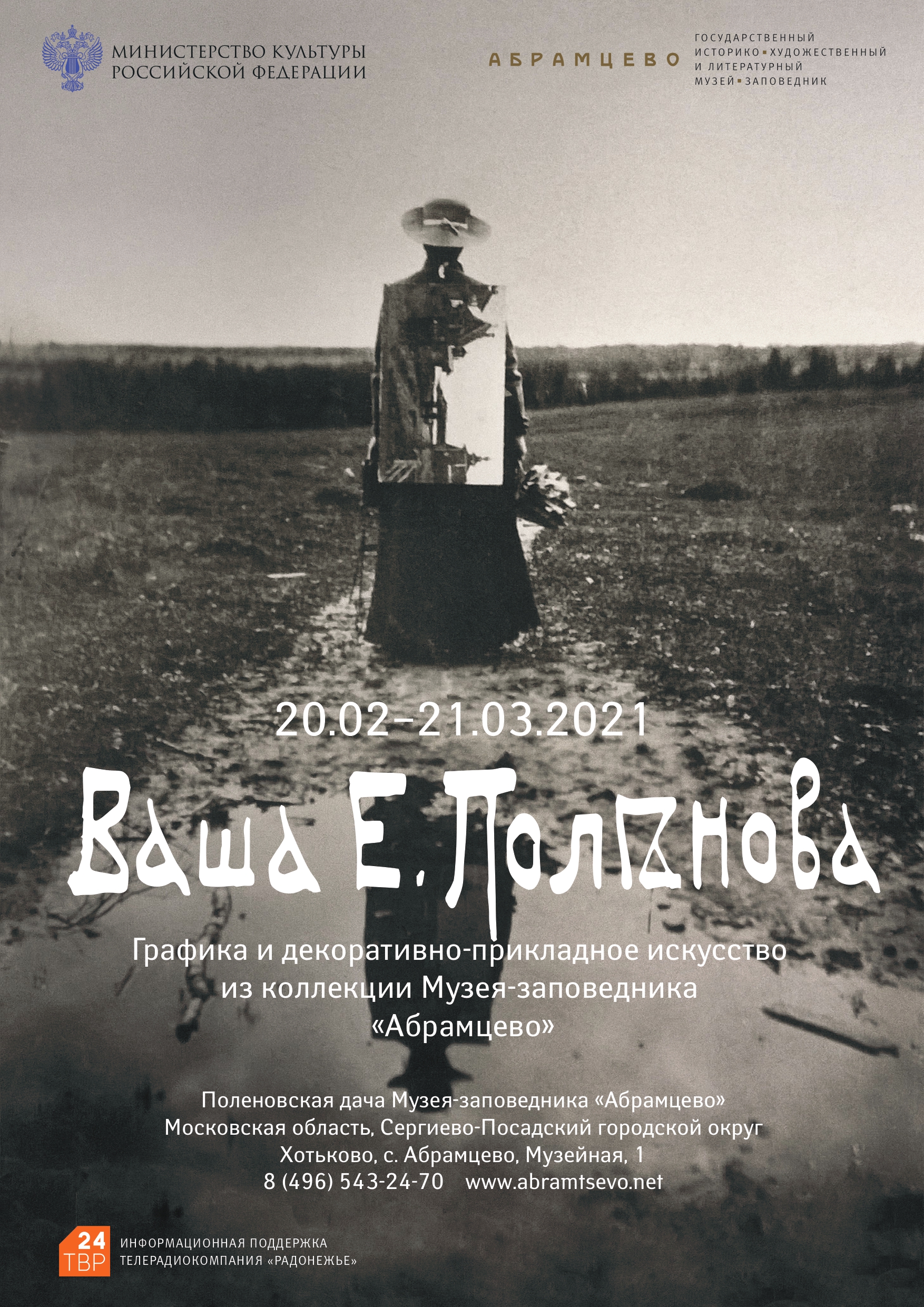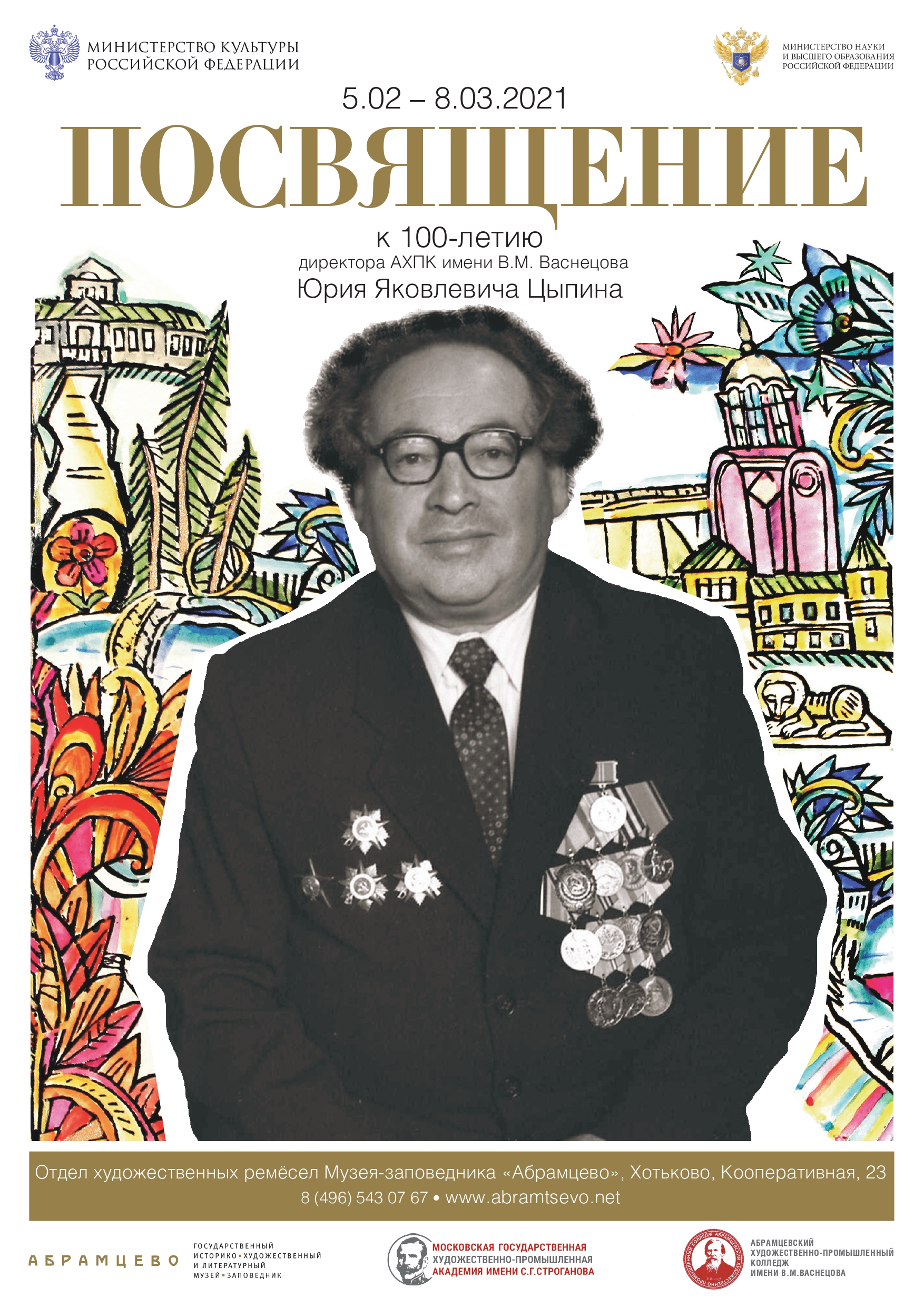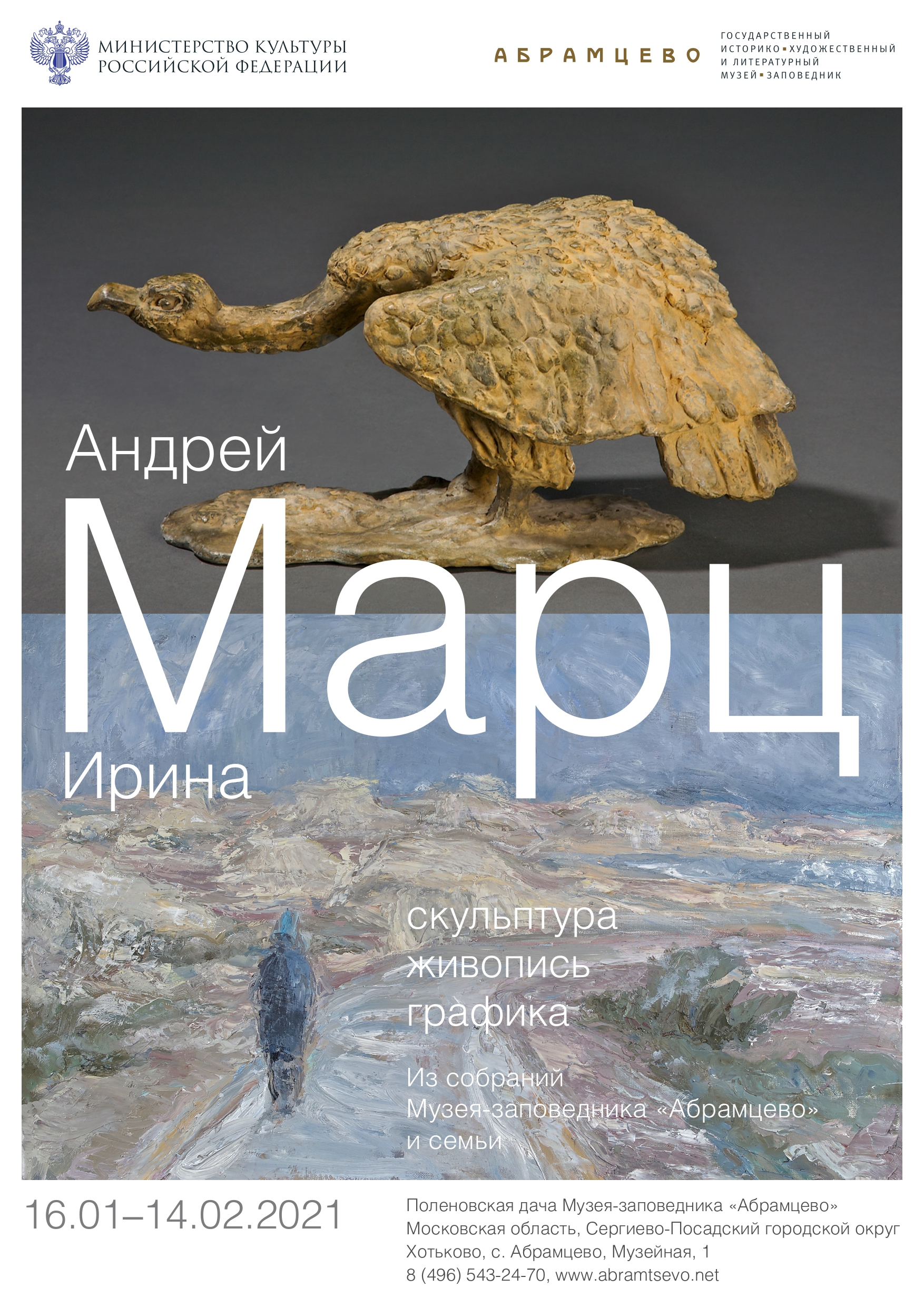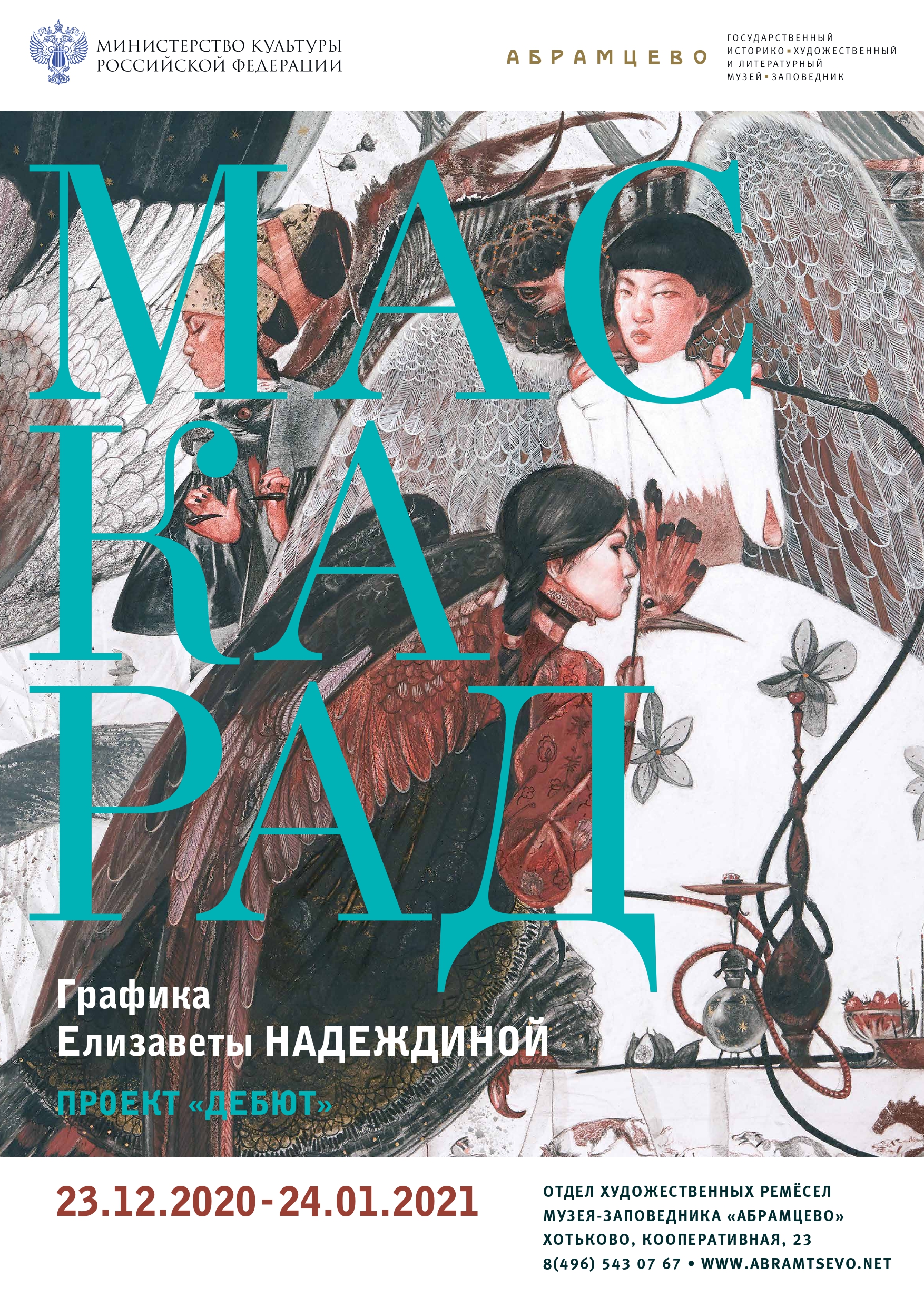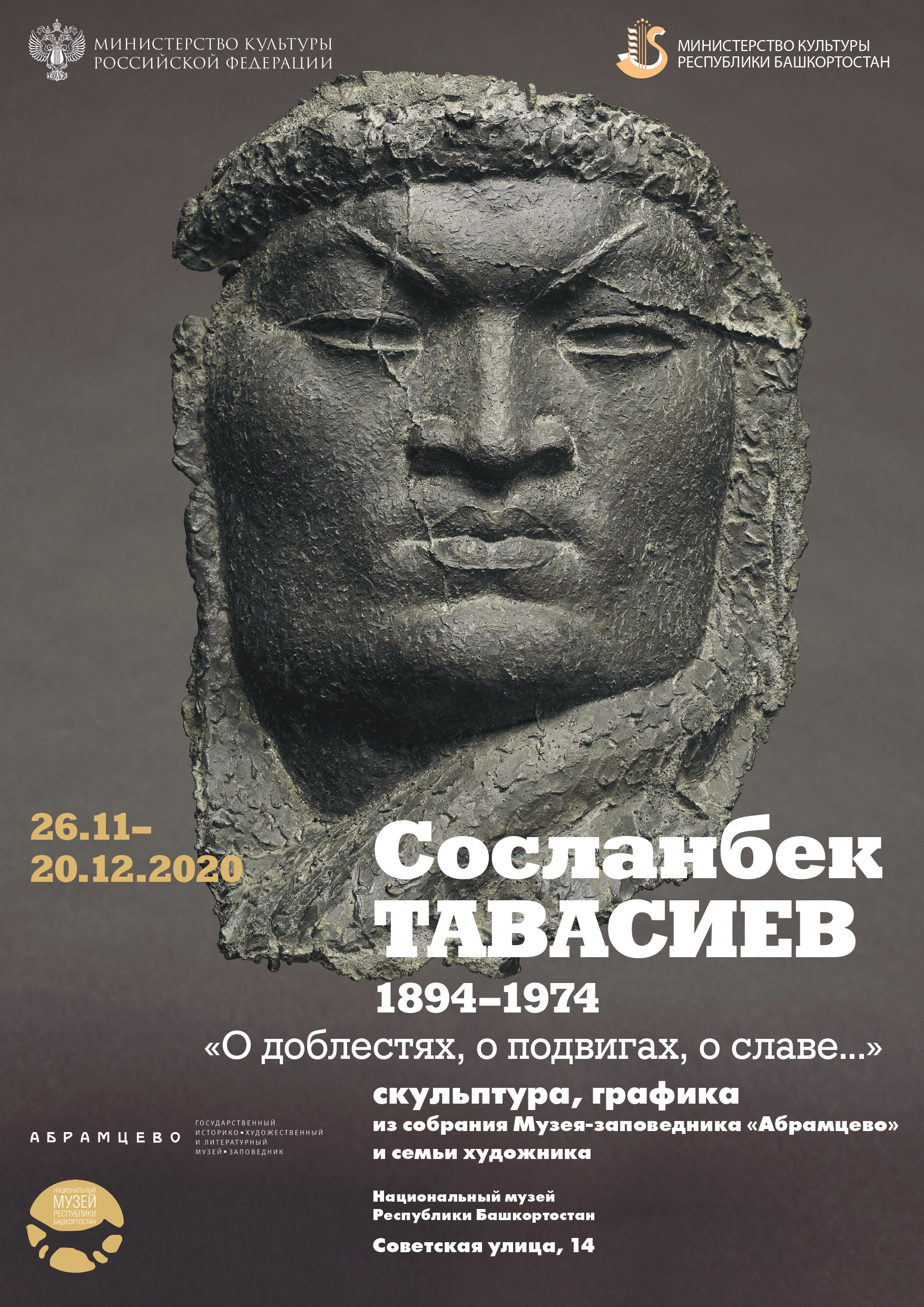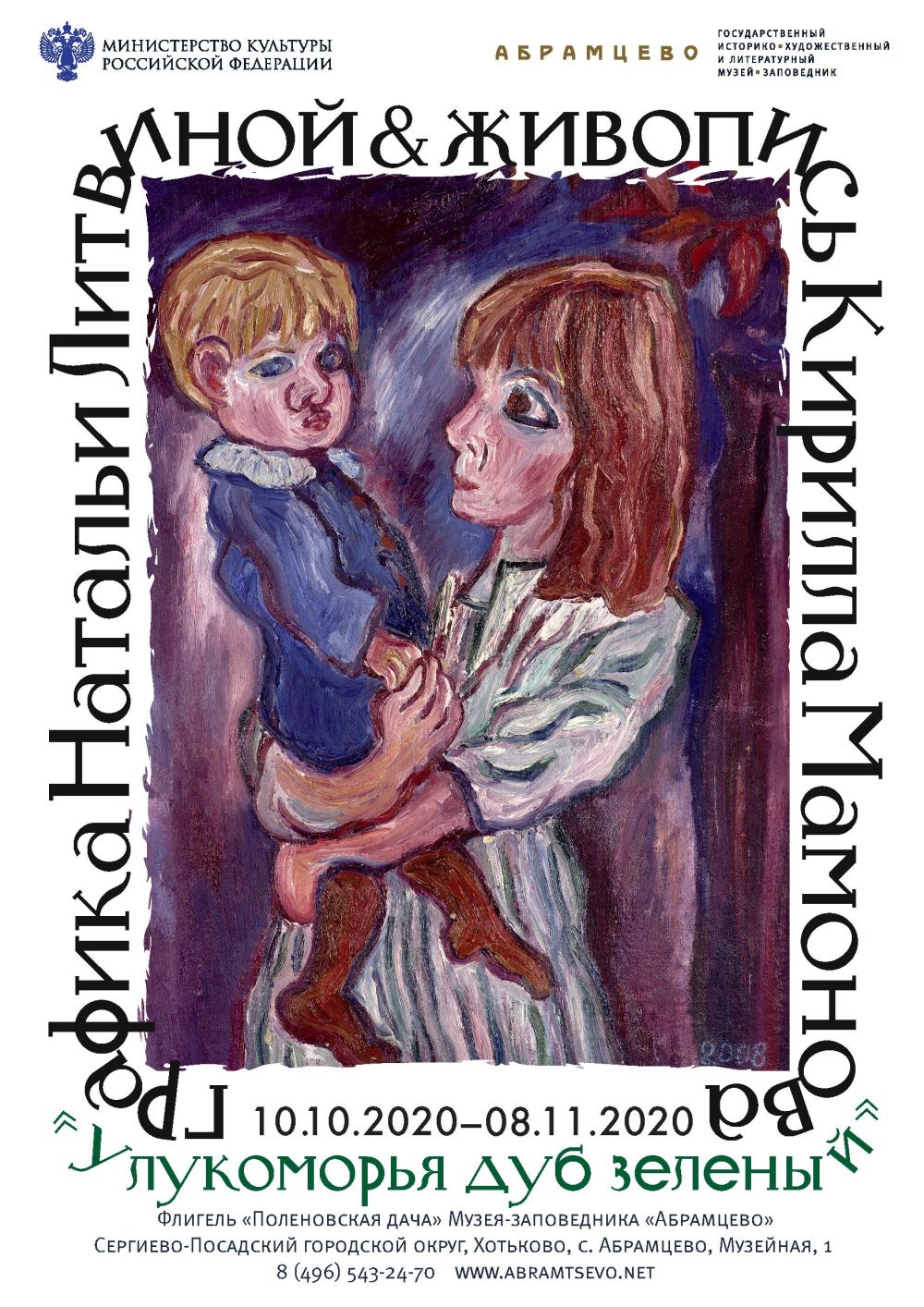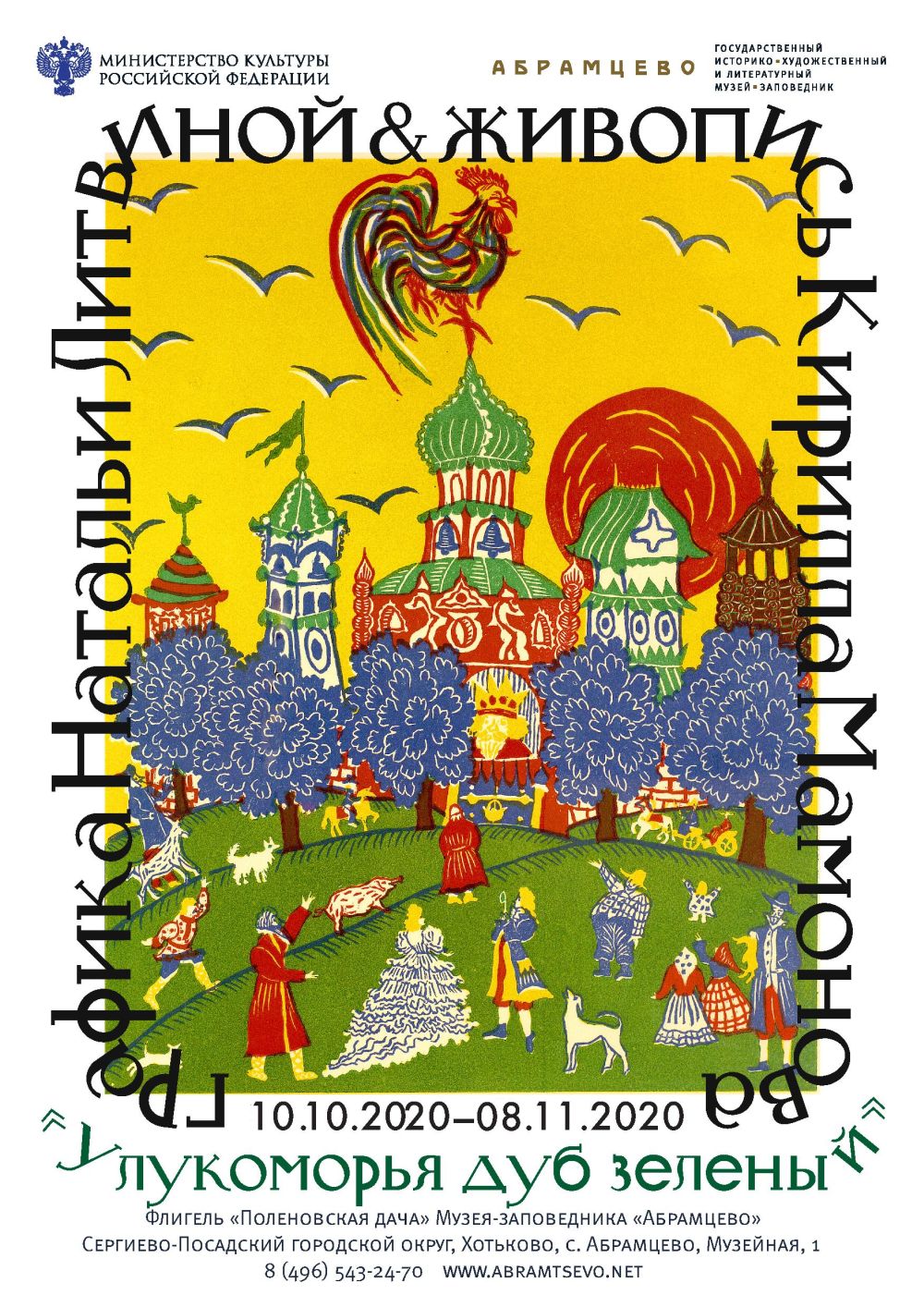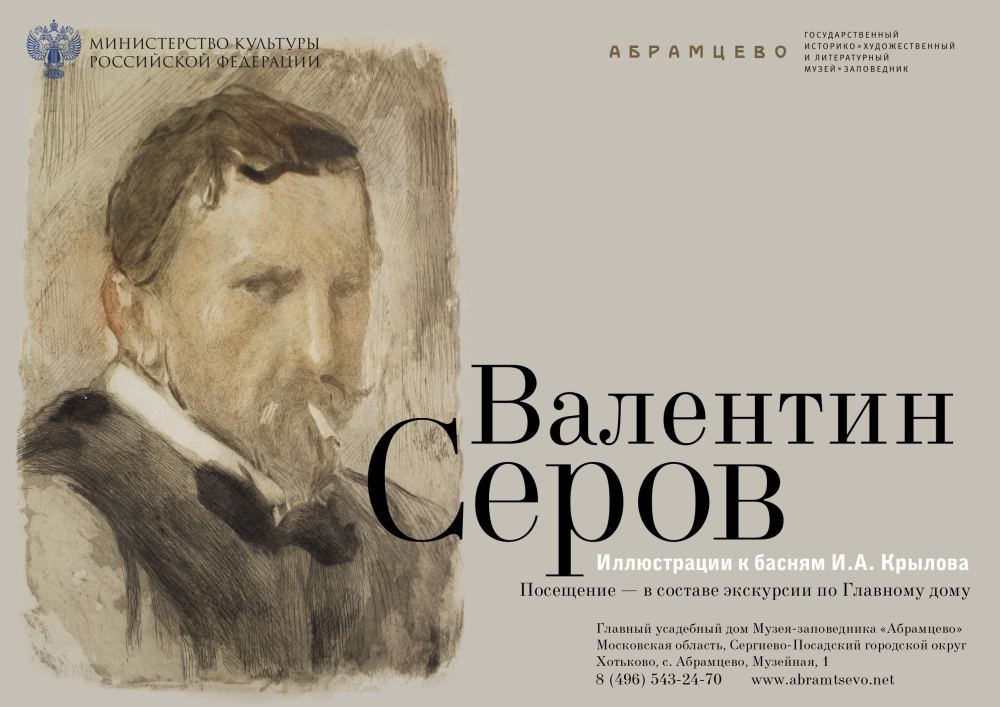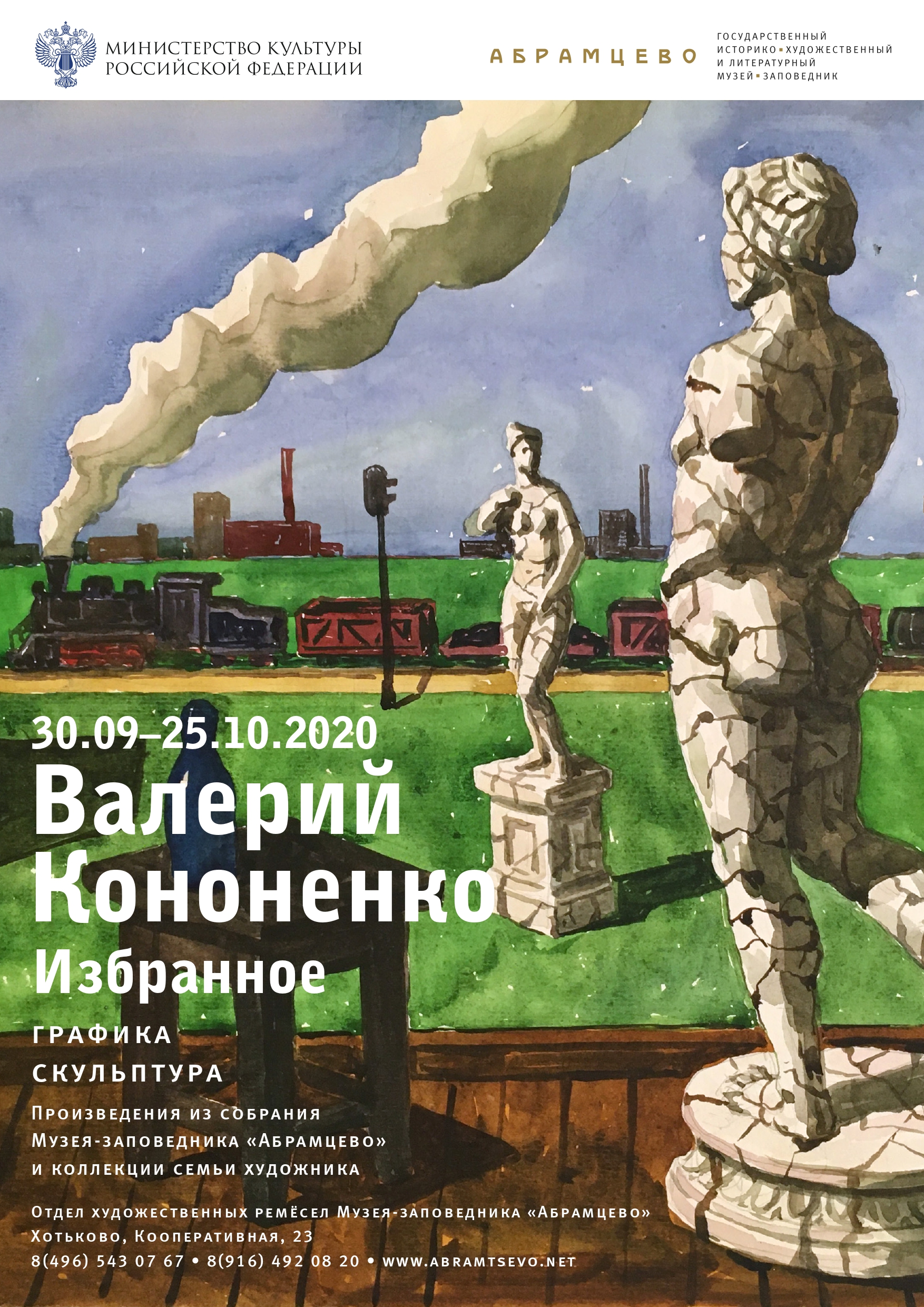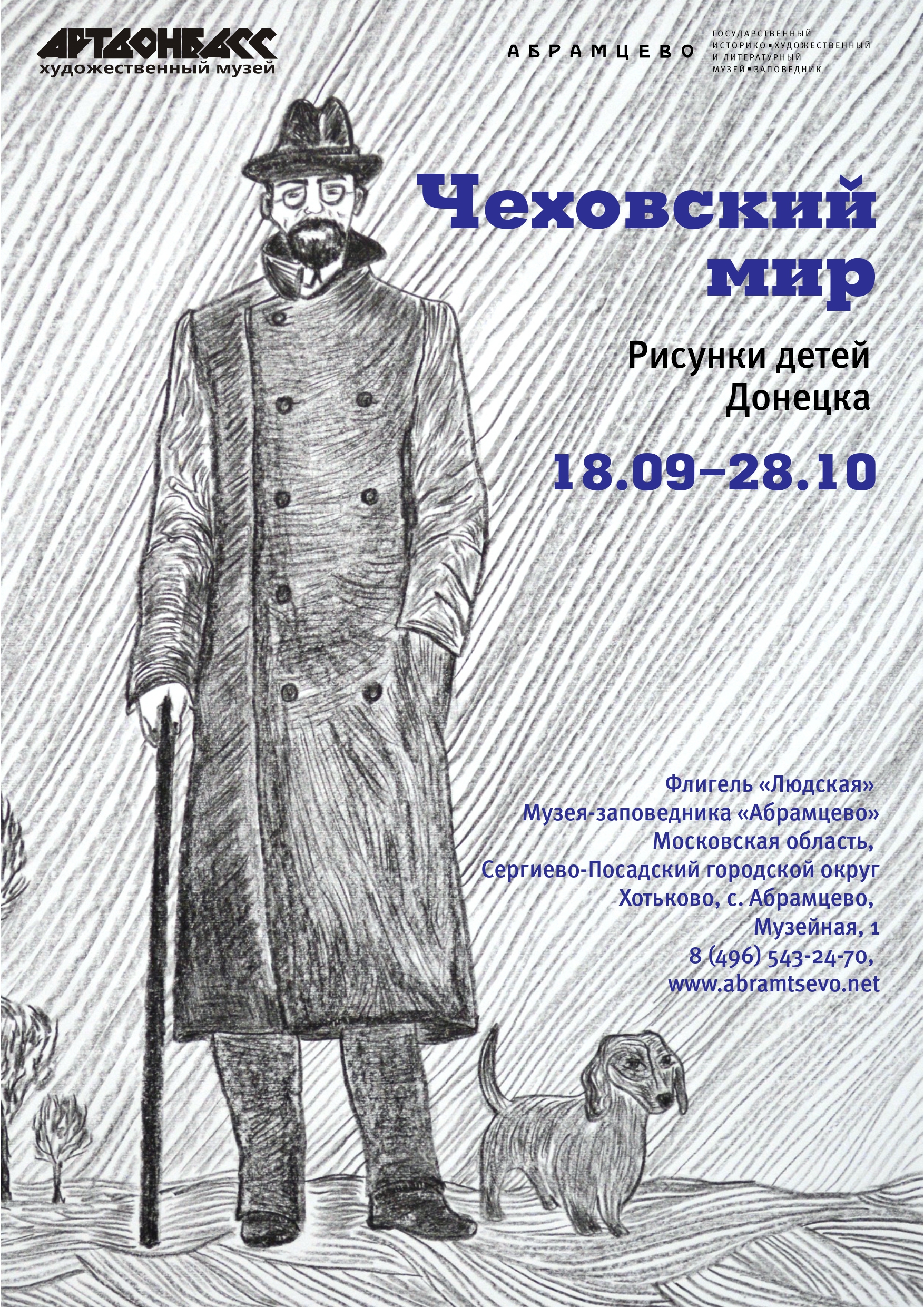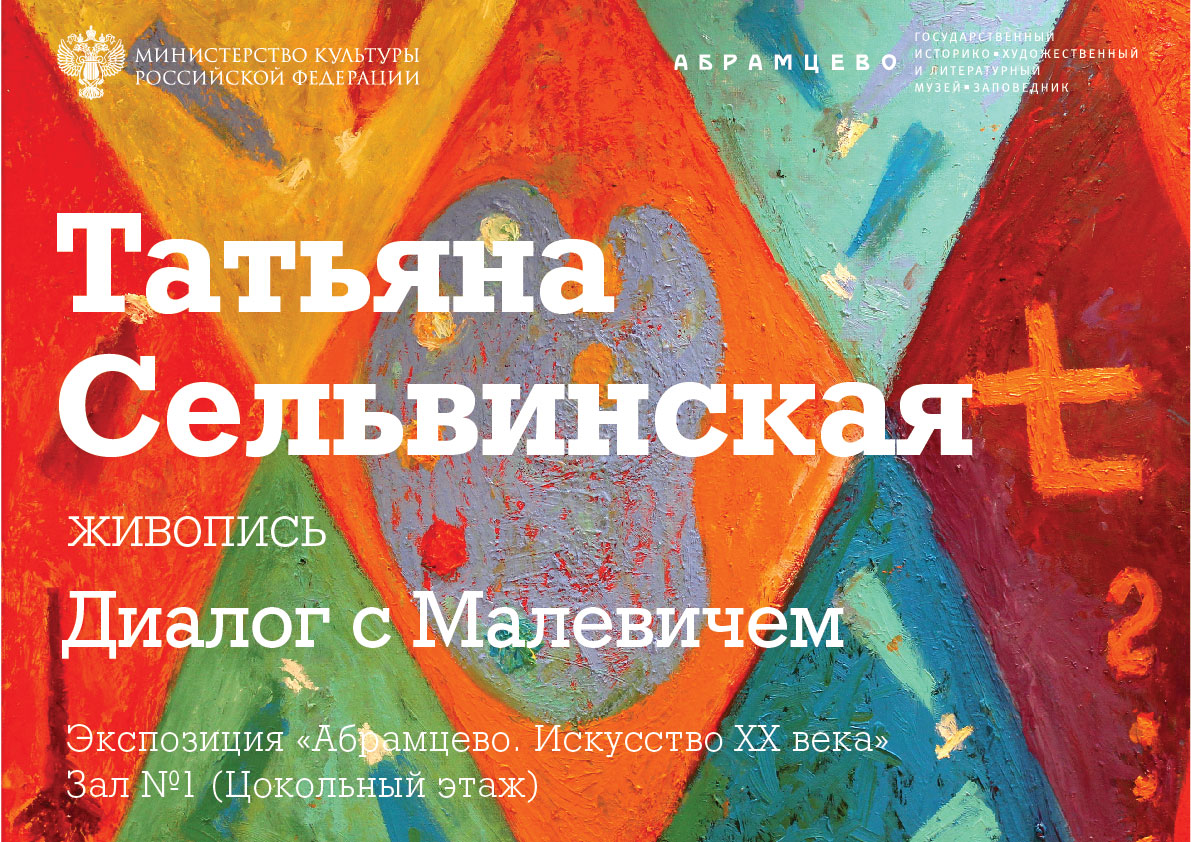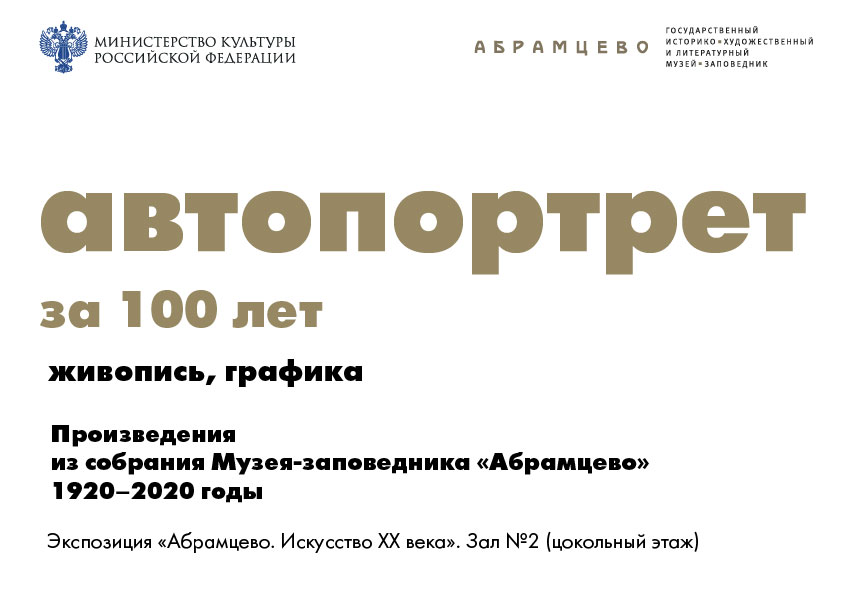|
┬Ā Exhibition ŌĆ£The World of Childhood in Russian Fine ArtŌĆØ┬Ā
┬Ā ┬Ā Exhibition period: May 28 - July 18, 2021 Location: Polenov's Dacha of the Museum-Reserve ŌĆ£AbramtsevoŌĆØ ┬Ā ┬Ā An exhibition ŌĆ£The World of Childhood in Russian Fine ArtŌĆØ has opened at the Museum-Reserve. The exposition presents 32 works of painting and graphics of the 19th - early 20th centuries from the funds of the National Art Museum of the Republic of Belarus. They are organically complemented by works by Russian artists from the collection of the State Historical, Artistic and Literary Museum-Reserve ŌĆ£AbramtsevoŌĆØ. The exposition includes works by Vasily Tropinin, Ivan Khrutsky, Vasily Perov, Viktor Vasnetsov, Elena Polenova, Nikolay Bogdanov-Belsky and many others. The exhibition is organized as part of an agreement between the two museums, signed in 2019 in St. Petersburg at the Sixth Forum of Russian and Belarusian Regions. The true discovery of the personality of the child, the peculiarities of his psychology, took place in Russian culture only in the first half of the 19th century, in the era of romanticism. Artists working at that time in the genre of a child's portrait strove for naturalness and emancipation in the interpretation of images, with pleasure they emphasized the ŌĆ£childishnessŌĆØ in the appearance and behavior of their heroes. At the same time, a cult of the family and family virtues was developing in Russian society, and images of a mother surrounded by children became popular. In the second half of the 19th century, under the influence of democratic tendencies, the children's theme in art acquired a social connotation. Children from the poorest classes became the main characters in the paintings of the artists of the 1860s and 80s. Artists often used the childish image in order to increase the incriminating power of their works. In painting at the turn of the 19th and 20th centuries, artists often combine genres; in such works, children are both a symbol and a conductor of an enthusiastic and enchanted perception of life. The ability to compare different points of view on the personality of the child and the theme of childhood is the main advantage of the exhibition. The works presented on it are designed to remind the viewer that a child at all times is a significant symbol of the unbrokenness of being, and therefore the eternity of the world. ┬Ā ┬Ā
View the embedded image gallery online at:
http://abramtsevo.net/eng/forvisitors/exhibitions.html#sigProGalleriaf7c0904443 ┬Ā ┬Ā ┬Ā ┬Ā ┬Ā ┬Ā ┬Ā ┬Ā ┬Ā ┬Ā ┬Ā ┬Ā Exhibition ŌĆ£Everything Is In Open Work. Russian and Western European Lace Of the 19th-20th Centuries From the Collection Of Olga ZhuravlevaŌĆØ┬Ā
┬Ā ┬Ā Exhibition period: April 30 ŌĆō May 30, 2021 Location: Arts and Crafts Department of the Museum-Reserve ŌĆ£AbramtsevoŌĆØ ┬Ā ┬Ā The exhibition will present Russian and Western European lace of the 19th-20th centuries from the collection of Olga Zhuravleva, and tell about the amazing form of decorative and applied art - lace-making, its history, cultural and social significance, symbolism, technologies and types of lace from the 19th century to the present days. More than 100 items from the collection of the Moscow collector and researcher of ancient lace Olga Zhuravleva were included in the exhibition. Among them are luxurious lace bedspreads, capes, garments, valances, towels, lace samples of various, sometimes amazing, techniques of execution. The exhibition showcases lace from recognized historical lace centers in France, Belgium (Flanders), Italy and other European countries. ┬Ā ┬Ā ┬Ā ┬Ā ┬Ā Exhibition ŌĆ£Gift of the Editorial Board of the Magazine ŌĆ£Our HeritageŌĆØ┬Ā
┬Ā ┬Ā Exhibition period: April 25 ŌĆō May 23, 2021 Location: Polenov's Dacha of the Museum-Reserve ŌĆ£AbramtsevoŌĆØ ┬Ā ┬Ā In 2020 an unprecedented event took place in the life of the Abramtsevo Museum-Reserve: 259 works of art of the 20th-21st centuries were transferred to its collection from the collection of the editorial board of the magazine ŌĆ£Our HeritageŌĆØ. Created in 1988 on the initiative of academician Dmitry Likhachev and listed by UNESCO as one of the world's best publications on culture and art, ŌĆ£Our HeritageŌĆØ was a ŌĆ£synthetic magazineŌĆØ. Materials on literature and philosophy, painting and architecture, theater and music were often sensational in nature, and exhibitions introduced the art of contemporary artists and masters of the past. The collection of the magazine was formed from the gifts of the artists. At the Abramtsevo exhibition of new acquisitions, an attempt was made to demonstrate this unique collection in volume. And although the chamber space of PolenovŌĆÖs Dacha limits the number of exhibited works, it sets the only true ŌĆ£human scaleŌĆØ appreciated by the staff of the magazine ŌĆ£Our HeritageŌĆØ headed by the editor-in-chief Vladimir Yenisherlov. ┬Ā ┬Ā ┬Ā ┬Ā Exhibition of Vadim and Olga the Vetlins "Different about Different"┬Ā
┬Ā ┬Ā Exhibition period: March 25 ŌĆō April 25, 2021 Location: Arts and Crafts Department of the Museum-Reserve ŌĆ£AbramtsevoŌĆØ ┬Ā ┬Ā The exhibition gives an opportunity to look into the creative laboratory of artists and reflects the variety of their creative searches: in the choice of themes and subjects, in the development of figurative and abstract solutions, in admiring the nature and beauty of the objective world, the play of colors, forms and materials. Vadim and Olga the Vetlins are members of the International Association of Artists at UNESCO. Since 1985, they have been regular participants in professional art exhibitions of various levels. However, the Abramtsevo Museum-Reserve will host an exhibition of their works for the first time. ┬Ā
View the embedded image gallery online at:
http://abramtsevo.net/eng/forvisitors/exhibitions.html#sigProGalleria212619350d ┬Ā ┬Ā ┬Ā ┬Ā ┬Ā ┬Ā ┬Ā ┬Ā ┬Ā ┬Ā ┬Ā Exhibition of Painting and Graphics by Valery Babin┬Ā
┬Ā ┬Ā Exhibition period: March 25 ŌĆō April 18, 2021 Location: Polenov's Dacha of the Museum-Reserve ŌĆ£AbramtsevoŌĆØ ┬Ā ┬Ā 2021 marks the 230th anniversary of the birth of the remarkable Russian writer Sergey Aksakov. The Moscow artist Valery Babin's "From Childhood" exhibition is dedicated to Sergey Aksakov. It opened on March 27, 2021 in PolenovŌĆÖs Dacha and became the first of the artistic events that the Abramtsevo Museum-Reserve is preparing in the anniversary year of the writer. Childhood Landscape is an idea of Valery Babin's Exhibition. According to the artist, the landscape of childhood is the basis of the spiritual world. ŌĆ£Our soul, as in a form, is molded into the landscape of our childhood. And the world, which we first saw with our children's eyes, which we were surprised and happy in a childish way, the world of children's fears and sorrows, left an indelible mark on our entire adult life ŌĆØ(V. Babin). ┬Ā
View the embedded image gallery online at:
http://abramtsevo.net/eng/forvisitors/exhibitions.html#sigProGalleria515add43e2 ┬Ā ┬Ā ┬Ā ┬Ā ┬Ā ┬Ā ┬Ā ┬Ā ┬Ā ┬Ā ┬Ā Exhibition ŌĆ£Yours, E. PolenovaŌĆØ┬Ā ┬Ā
┬Ā ┬Ā Exhibition period: February 20 ŌĆō March 21, 2021 Location: Polenov's Dacha of the Museum-Reserve ŌĆ£AbramtsevoŌĆØ ┬Ā Elena Polenova met the Mamontovs in 1882, when she moved to Moscow and found herself in the circle of young artists - students and friends of her brother Vasily Polenov. She often visited Abramtsevo, in case of her departure she wrote letters to Elizaveta Mamontova, which she signed: ŌĆ£Yours, E. PolenovaŌĆØ. Possessing many-sided talents, the artist tried herself in different types of creativity: she painted landscapes in watercolors, was fond of illustrating the fairy tales, collected together with Elizaveta Mamontova antiques, thanks to which a museum of folk art was created in the estate. Since 1885, Elena Polenova became the artistic director of the carpentry workshop. For 9 years she has developed over 100 art projects. The exhibition shows the Abramtsevo period of the artistŌĆÖs work - searches in comprehending the national landscape, reflecting the ŌĆ£poetic view of the Russian people on Russian natureŌĆØ, ornamental compositions, products of the Abramtsevo joinery workshop, made according to her sketches. ┬Ā ┬Ā ┬Ā ┬Ā ┬Ā ┬Ā ┬Ā ┬Ā ┬Ā Exhibition ŌĆ£DedicationŌĆØ. To the 100th Anniversary Of the Birth of Yuri Tsypin┬Ā
┬Ā ┬Ā On February 5, an exhibition dedicated to the 100th anniversary of the birth of Yuri Tsypin, an outstanding figure in art education in Russia, the director of the Abramtsevo Art and Industrial School from 1961 to 1987, opens in the department of Arts and Crafts of the Abramtsevo Museum-Reserve. During the years of his directorship, Yuri Tsypin, together with a team of like-minded people, turned the Abramtsevo school into one of the largest secondary art educational institutions in the country. He managed to strengthen the connection with the tradition of the Abramtsevo art crafts and expand the scope of the school by opening new departments for training master artists. The main result of his work was several generations of talented graduates, artists of decorative and applied arts: ceramists, stone, bone, metal painters. The exhibition features works of decorative and applied art from the collection of the Abramtsevo Museum-Reserve, the collection of the Abramtsevo Artistic and Industrial School (today College) named after Viktor Vasnetsov , works of graduates of the college, photographs from the family archive, provided by the widow of Yuri Tsypin Galina Omelchenko. ┬Ā ┬Ā ┬Ā ┬Ā ┬Ā ┬Ā Exhibition ŌĆ£Andrey Martz. Irina Martz. Sculpture, Painting, GraphicsŌĆØ┬Ā
┬Ā ┬Ā Andrey Martz (1924-2002) is an animal sculptor, Honored Artist of the RSFSR. The Abramtsevo spectator knows and loves Martz's sculpture. The exhibition will feature works from the artist's studio, made in different materials, including sculptural compositions and sketches of the 1960s ŌĆō 70s. Irina Martz (b. 1959) is a painter, corresponding member of the Russian Academy of Arts. She was born in Moscow in the family of the sculptor Andrey Martz and art critic Lyudmila Martz. Graduated from the art department of the Moscow Polygraphic Institute. Since 1995, more than 10 personal exhibitions of Irina Martz have taken place in Russia and abroad. For Andrey and Irina Martz, artistic work is important precisely as an opportunity to understand the world in its entirety. Lyricism is filled with sculptural images of animals by Andrey Martz and masculinity - picturesque sketches about the Holy Land by Irina Martz. The exhibition will allow us to join the timeless professional conversation of artists whose work is time-tested. ┬Ā ┬Ā ┬Ā ┬Ā ┬Ā ┬Ā ┬Ā Exhibition Of Works By Elizaveta Nadezhdina ŌĆ£Masquerade. GraphicsŌĆØ┬Ā
┬Ā ┬Ā Elizaveta Nadezhdina was born in 1995 in Khotkovo, in the family of artists Marina and Alexey the Nadezhdins. She graduated from the painting department of the Abramtsevo Artistic and Industrial School (today College) named after Viktor Vasnetsov . Elizaveta Nadezdina is a winner and laureate of all-Russian and international competitions, a member of the Creative Union of Artists of Russia. The work of Elizaveta Nadezhdina is very unusual; she has a special gift to connect ancient legends and the modern world around her in works. Drawing inspiration from real life, she embodies artistic images in a completely non-trivial, sometimes fantastic way. The works by Elizaveta Nadezhdina attract attention by the freshness of eye, subtle thoughtful decorativeness and bright metaphor, the rhythmic organization of forms and lines. The artist's technique is very complex, mixed and multi-layered. The exposition of the current exhibition consists of 50 works. Basically, this is an easel graphics. There are also paintings and several landscape works. ┬Ā ┬Ā ┬Ā ┬Ā ┬Ā ┬Ā ┬Ā ┬Ā ┬Ā ┬Ā ┬Ā ┬Ā ┬Ā ┬Ā Exhibition ŌĆ£On Valor, On Exploits, On Glory...ŌĆØ┬Ā
┬Ā ┬Ā In Bashkiria, in Ufa, in 1967, a monument to the national Bashkir hero Salavat Yulaev was opened on the occasion of the 50th anniversary of the October Revolution. The author of the monument is the Soviet sculptor Soslanbek Tavasiev (1894-1974). The monument received recognition, and the sculptor became the People's Artist of the Bashkir ASSR and was awarded the USSR State Prize (1970). The exhibition ŌĆ£On valor, on exploits, on glory ...ŌĆØ is dedicated to the memory of this symbolic event in the cultural life of Bashkortostan and refers to the work of the original sculptor. 28 works by Soslanbek Tavasiev from the collection of the Abramtsevo Museum-Reserve and the artist's family will present his career, full of valor and professional inspired work. The exhibition includes 3 sections: ŌĆ£Origins, history of the country of the Soviets and the formation of skillŌĆØ, ŌĆ£Novo-AbramtsevoŌĆØ, ŌĆ£Monument to Salavat YulaevŌĆØ. Sculptural sketches and graphic works by Soslanbek Tavasiev of the 1930-1950s, easel sculptures made in plaster, stone, wood and bronze, create a space of intense creative process, which reflects time. ┬Ā
View the embedded image gallery online at:
http://abramtsevo.net/eng/forvisitors/exhibitions.html#sigProGalleriaf8e148ec9f ┬Ā ┬Ā ┬Ā ┬Ā ┬Ā ┬Ā ┬Ā Exhibition ŌĆ£Green Oak Near the LukomoryeŌĆØ┬Ā ┬Ā
┬Ā ┬Ā Exhibition period: October 10 - November 8, 2020 Location: Polenov's Dacha of the Museum-Reserve ŌĆ£AbramtsevoŌĆØ ┬Ā October 10, 2020 the exhibition ŌĆ£Green Oak Near the Lukomorye Natalia Litvina (graphics) and Kirill Mamonov (painting)ŌĆØ was opened in the Polenovskoy dacha of the Abramtsevo Museum-Reserve. The name of the exhibition was chosen by the artist Kirill Mamonov in memory of Natalia Litvina's fabulous talent. Natalya Litvina (1937-1995) was born in Moscow, worked at the Soyuzmultfilm film studio, graduated from Moscow State University with a degree in art, joined the Union of Artists of the USSR, was the wife of Kirill Mamonov and gave birth to his son Bogdan, participated with him (and personally) in exhibitions... Her works are kept in private collections in Russia and abroad. The exhibition features twenty-nine colored linocut by Natalya Litvina of the 1980s and early 1990s - bright and full in color, decorative and ornamental. In them, one can easily guess the proximity to the popular print, Gorodets donets, Filimonov's clay toy. ŌĆ£In the artist's drawings, as in folk art, innocence, sly humor, wisdom, trust in the world of simple human feelings and actions, where good will never turn into evil, are organically combinedŌĆØ (A. Denisov). Kirill Mamonov chose for the exposition in Abramtsevo not only the fabulous works of Natalia Litvina, but also the ŌĆ£GardenŌĆØ of her flowers. The artist's soul was joyful. This is how she remained in the bizarre portraits of flowers. Being a well-known graphic artist in Moscow, Kirill Mamonov decided to present his painting at the exhibition. The motives of his painting are unassuming, devoid of plot lines. The melancholy of provincial life, special northern landscapes and characters clearly not enjoying life. ŌĆ£The distinct theme of these works, of the artist's entire work, is the tragedy of everyday life, the horror of a catastrophically unspiritualized being. That is why, despite the seemingly complete absence of ŌĆ£socially significantŌĆØ subjects, he is seen as a highly social artist. As few Kirill Mamonov is unconditionally loyal to himself. He still lives in the same overstrained and unhappy world, and stubborn stoicism remains the unbending core of his art. The excitement and sophistication of Kirill Mamonov's works merges him with the classics of Russian literature from Nikolai Gogol and Mikhail Saltykov-Shchedrin to Andrey Platonov and Venedikt Erofeev,ŌĆØ Yuri Gerchuk wrote about the artist in 2013. It turns out that the exhibition is built on an emotional and, therefore, plastic contrast. Yes, and only at first glance. An open, merciless look into the artist's life reconciles Mamonov with its tragedy and gives glimpses of luminous harmony. At this moment, painting acquires continuity and overcomes the pain of the grotesque. This is the thought of Yuri Norshtein, and the viewer is given a unique opportunity to see his painting (Natalia Litvina, 1968). ┬Ā ┬Ā ┬Ā
View the embedded image gallery online at:
http://abramtsevo.net/eng/forvisitors/exhibitions.html#sigProGalleria4c71dacc14 ┬Ā ┬Ā ┬Ā ┬Ā ┬Ā ┬Ā ┬Ā ┬Ā Exhibition ŌĆ£Illustrations by Valentin Serov to the fables of Ivan KrylovŌĆØ┬Ā
┬Ā Location: The Manor House of the Abramtsevo Museum-Reserve ┬Ā The Abramtsevo Museum-Reserve has opened an exhibition ŌĆ£Illustrations by Valentin Serov to the fables of Ivan KrylovŌĆØ, which presents previously not exhibited materials from the funds of the Museum-Reserve. The exhibition can be visited as part of a guided tour of the Manor House. The proposed exhibition presents the first (or one of the first) editions of the series in the form of a set of postcards (Goznak, Moscow, 1927) from drawings, the originals of which are kept in the funds of the State Tretyakov Gallery. In the funds of the Abramtsevo Museum-Reserve, in the section of printed graphics, there are several etchings by the artist, together with his self-portrait, they complete the exposition. ┬Ā ┬Ā ┬Ā ┬Ā Exhibition of Works by Valery Kononenko ŌĆ£Favorites. Graphics and SculptureŌĆØ┬Ā
┬Ā Exhibition period: September 30 ŌĆö October 25, 2020 Location: Arts and Crafts Department of the Museum-Reserve ŌĆ£AbramtsevoŌĆØ (23, Kooperativnaya str., Khotkovo) ┬Ā Valery Kononenko (1939ŌĆō2011) is a painter, graphic artist, poet, teacher. Was born in Dnepropetrovsk. Studied at the Dnepropetrovsk Art School, then at the Moscow Higher Art and Industrial School named after Sergey Stroganov. In 1969-2001 Valery Kononenko taught painting and drawing at the Abramtsevo Art and Industrial School named after Viktor Vasnetsov. The main thing in the life of Valery Kononenko has always been creativity. A metaphysician by nature, he created a deeply unique and expressive language of painting. He preferred the silence of a workshop to any kind of publicity. He was not a member of any Union, but simply had a pronounced artistic personality. Exhibition of works from the collection of the artist's family and the collection of the Abramtsevo Museum-Reserve - the only Russian museum that stores the works of this remarkable master. ┬Ā
View the embedded image gallery online at:
http://abramtsevo.net/eng/forvisitors/exhibitions.html#sigProGalleria6d2d1153fd ┬Ā ┬Ā ┬Ā ┬Ā ┬Ā ┬Ā ┬Ā Exhibition ŌĆ£Chekhov's WorldŌĆØ┬Ā
┬Ā ┬Ā A joint exhibition of the Abramtsevo Museum-Reserve and the Art-Donbass Art Museum is timed to coincide with the 160th anniversary of the birth of Anton Chekhov. It became possible thanks to a cooperation agreement between the two museums. The current exposition is a reciprocal step, earlier this year in Donetsk there was also a joint exhibition ŌĆ£Savva Mamontov - an Entrepreneur and a Patron of ArtsŌĆØ, where historical photographs from the funds of Abramtsevo were presented. Our exhibition is timed to coincide with significant dates - the 75th anniversary of Yury Khmelevskoy and the 50th anniversary of his creative activity. The exhibition presents about 120 of his works created in different years. A special place is occupied by works performed by the master recently and for the first time presented to the audience. The Museum ŌĆ£Art-DonbassŌĆØ conducts systematic work with children's creativity, it has created a fund of drawings by young masters. On the occasion of the Chekhov anniversary, the Museum organized the Open Competition of Children's Drawings ŌĆ£Chekhov's WorldŌĆØ . 147 works (painting, graphics) took part in it in two nominations: ŌĆ£Through the pages of favorite booksŌĆØ and ŌĆ£Chekhov and his heroes in the XXI century ŌĆØ. The young authors showed the modernity of the plots and images of Chekhov, tried to present his heroes in today's world. The works were received from students of art schools, art schools, art studios in cities: Donetsk, Gorlovka, Zhdanovka, Debaltsev, Yenakiev, Makeevka... The series of drawings are dedicated to the heroes of the satirical stories of Anton Pavlovich Chekhov and his heroes in the XXI century ŌĆ£Fat and ThinŌĆØ, ŌĆ£Man in a Case and "Surgery ŌĆØ. Young artists fully succeeded in refined female images of sisters Irina, Maria, Olga from the play ŌĆ£Three SistersŌĆØ and Anna Sergeevna, the main character of the story ŌĆ£Lady with a Dog ŌĆØ, they turned out to be weightless and very graceful in their drawings. The guys portrayed animals with amazing touching: an old she-wolf and a puppy White-fronted from the story ŌĆ£White-FrontedŌĆØ, a cheerful and faithful Kashtanka with new circus friends, a playful white spitz. The exhibition clearly shows that the two museums, despite the geographical distance separating them, exist in a single cultural field of great Russian literature. ┬Ā
View the embedded image gallery online at:
http://abramtsevo.net/eng/forvisitors/exhibitions.html#sigProGalleria8a0a76a376 ┬Ā ┬Ā ┬Ā ┬Ā ┬Ā ┬Ā ┬Ā ┬Ā Exhibition of Works by Tatiana Selvinskaya ŌĆ£Dialogue with MalevitchŌĆØ┬Ā
┬Ā ┬Ā Tatiana Selvinskaya is a painter, set designer, and a poet. Honored Artist of Russia, Laureate of the State Prize of Russia. Born in Moscow on November 2, 1927 in the family of the poet Ilya Selvinsky. 1953 - graduated from the Moscow State Art Institute named after Vasily Surikov. 1954 - Member of the Moscow Union of Artists. 1964 - a member of the WTO, now the Union of Theater Workers. Teachers - Robert Falk, Alexander Tyshler, Mikhail Kurilko Sr. 1954 - the first exhibition. 1956 - the first performance. Since 1956 - more than 150 performances in the leading theaters of Moscow: the Taganka Theater, Lenkom, the theater named after Vladimir Mayakovsky, theater named after Eugeny Vakhtangov, theater named after Alexander Pushkin, theater. Named after Eugeny Simonova, The Moscow Young Generation Theater, RAMPT, Soviet Army Theater, as well as in the cities of the Soviet Union - from Odessa to Magadan. She worked with directors such as Nikolay Okhlopkov, Piotr Fomenko, Mikhail Levitin and others. Since 1956 ŌĆö the participant of all republican, zonal, Moscow exhibitions in Manezh, Moscow. Participant of almost all theatrical exhibitions ŌĆ£Season ResultsŌĆØ , Moscow, Quadrennial in Prague, Biennale in Sao Paulo, Brazil, Triennial in the Baltic republics. 1966-1978 - the head of the theater department of the Moscow State Art University in memory of 1905, graduated more than 100 students. Has released six collections of poetry. ŌĆ£Dialogue with MalevichŌĆØ is the title of the exhibition of paintings by Tatyana Selvinskaya, which unites the series ŌĆ£Dialogue with MalevichŌĆØ, ŌĆ£Rhythms of LifeŌĆØ, ŌĆ£The ArtistŌĆØ, ŌĆ£Three ArtŌĆØ. The paintings were painted in 2019-2020. Kazimir Malevich (1879ŌłÆ1935) - the founder of Suprematism, a direction in painting that arose in the 1910s in Russia. Suprematism is an art that has replaced Cubism. If the transmission of the three-dimensionality of nature by schematized volumes was called cubiz, then to depict nature suprematistically meant taking only colors from it, enclosing them in a two-dimensional plane and emphasizing the independence of color with simple forms (square, circle, triangle). ŌĆ£SupremusŌĆØ is excellent, which, according to the Suprematists, equated to the domination of painting over nature. Tatiana Selvinskaya treats her non-objective compositions not as a symbol, but as an artistic form. Malevich's plastic experience at some stage seemed interesting to her in solving colorful problems. Simple shapes: straight and round planes, without any content, help Selvinskaya to be free in the art of color. The canvases of the ŌĆ£Dialogue with MalevichŌĆØ polyptych (2019) are built in a pure pictorial rhythm (not to be confused with intellectual rhythm, the question ŌĆ£what?ŌĆØ does not work in this case). The artist conveys the movement of the color mass (rainbow) and operates with the language of color forms, which in itself is close to Suprematism. Selvinskaya reveals her own law of consonance of forms and colors, her own version of the gravitation of forms and colors to each other, the dependence of one on the other, harmony, rhythm and contrasts. In the series "The Artist", "Rhythms of Life", "Three Art" (2020), balancing on the brink of non-objectiveness, Selvinskaya also leaves the path of storytelling. Not a real object or phenomenon in nature, as it is or was in reality, but a brilliant colorful scale that sounds like music, and a compositional rhythm that awakens the associative imagination, are offered by the artist to the viewer. Tatiana Selvinskaya is inclined to aphorisms, and once she said: ŌĆ£My great predecessors - Korovin, Golovin, Serov - brought painting to the theater. I bring the THEATER into paintingŌĆØ. Selvinskaya's painting easily and simply ŌĆ£plays the theaterŌĆØ, because by its very nature, in its very beginnings, it is theatrical. It can be said differently: the theater of Selvinskaya never existed separately from her easel creativity, was not the periphery of painting, but its continuation and natural development. In the same way, the theater has always been part of the artist's painting: by no means only by plots and themes, but by its essence and nature. The most recent series of paintings is no exception. They are ŌĆ£theatricalŌĆØ in their plastic essence. And here's another thing to say... The freer Selvinskaya feels in her own world, the more expressively and individually her painting declares itself, the more and more the art of other masters and other eras approaches her. The artist's path to himself is at the same time the path to world art. At the same time, Tatyana Selvinskaya (Tata, as her father Ilya Selvinsky lovingly called her, followed by all good friends) does not quote, does not copy, does not imitate masterpieces. Here is a dialogue, here is imagination, and most importantly - here is the artist's world, ready to accommodate the worlds of other creators. ┬Ā ┬Ā
View the embedded image gallery online at:
http://abramtsevo.net/eng/forvisitors/exhibitions.html#sigProGalleria7621b02ee4 ┬Ā ┬Ā ┬Ā ┬Ā ┬Ā ┬Ā ┬Ā ┬Ā Exhibition ŌĆ£Self-PortraitŌĆØ┬Ā
┬Ā ┬Ā Self-portrait hall in the exhibition ŌĆ£Abramtsevo. Art of the XX centuryŌĆØ did not arise by chance. It is this genre that firmly and strongly declared itself in Abramtsevo's contemporary collections of painting, graphics, and engravings. Abramtsevo artists - our contemporaries - transferred (and are transferring) their self-portraits to the collection. A similar process was (and is) observed in the Uffizi Gallery (Florence). In addition to the masterpieces of the Renaissance masters, the Uffizi is famous for its collection of self-portraits, which is located in the so-called ŌĆ£Vasari CorridorŌĆØ and has about 1,500 paintings. The collection was started in the 17th century by Cardinal Leopoldo Medici. An art lover and philanthropist, he bought for the museum a large collection of self-portraits of old masters that were kept in the Roman Academy of St. Luke. For several centuries, the collection has been constantly replenished. The main source of renewal of the collection was, of course, the artists themselves. Sometimes the management of the Uffizi through the Florentine Academy of Arts ordered them to write a self-portrait for the gallery. It was an honor for an artist to receive such an order. But more often the artists themselves presented their self-portraits as a gift to the museum, realizing that getting into the Uffizi collection means getting into eternity (in the human mind). It is joyful and proud that among the luminaries of painting in the ŌĆ£Vasari CorridorŌĆØ there are also Russian names: Orest Kiprensky, Ivan Aivazovsky, Boris Kustodiev, Alexey Isupov, Viktor Ivanov, and others. Among the Abramtsevo artists are Andrey Lysenko and Nikolai Romadin. There is an essay ŌĆ£On a Self-PortrraitŌĆØ by Nikolai Andronov. The essay was published in the catalog ŌĆ£Nikolay Andronov. 1929-1998. Exhibition of works from the collections of the State Tretyakov Gallery and the artist's family. On the occasion of the 75th anniversary of his birthŌĆØ. These self-portraits speak volumes. They acquaint with the spiritual image of the authors, their creative temperament appears before us in artistic evidence, which is difficult to translate into verbal language, and the artist's creative concept in a self-portrait becomes the most vivid, as if helping to read the aesthetic aspirations of the time (era). There are many methods and ways of working on a self-portrait: by means of a mirror (Boris Ioganson, Evgeny Katsman, Nikolay Kuzmin), a complex composition composition (Viktor Popkov, Kirill Mamonov, Valentina Kutsevich), according to imagination (Sergey Goryaev, Maria Andronova) or free imagination (Natalya Egorshina, Andrey Krasulin). The relationship between the psychologism of the portrait and its possible documentary fidelity is expressed in the self-portraits by Viktor Kukol, Alexander Berezin, Tatyana Malyukova. Self-portraits by Leonid Pisarev are dissimilar to each other (externally). The secret of this dissimilarity lies in deep analysis, in the artist's striving for psychological certainty. The very external dissimilarity opens the tendency of a continuous search for the truth, and not the elementary plausibility of the fact. The romantic ideal, sublime dreaminess and vitality are embodied in the self-portrait of Alexey Shmarinov. In it, a still young artist (a self-portrait of the 1950s) expressed a synthesis of his aesthetic and spiritual aspirations, in him - the temperament of hobbies and thirst for perfection of the great masters of the past. Fantasy, imagination and visual memory - in the self-portraits of Nikolay Sokolov, Vitaly Goryaev, Alexander Pervukhin. As well as the subtlest psychological characteristics, a variety of pictorial situations. In Yevgenia Maleina's self-portrait, life, everyday characteristics are in natural unity with the transmission of the poetic world. The exciting expression of a wonderful talent is reflected in the self-portrait of Mikhail Ivanov. ┬Ā ┬Ā
View the embedded image gallery online at:
http://abramtsevo.net/eng/forvisitors/exhibitions.html#sigProGalleria2cbd81ae37 ┬Ā ┬Ā ┬Ā ┬Ā ┬Ā ┬Ā ┬Ā ┬Ā Exposition ŌĆ£Abramtsevo. Arts of the 20th centuryŌĆØ┬Ā
┬Ā ┬Ā The exposition ŌĆ£Abramtsevo. Arts of the 20th centuryŌĆØ presents the works of artists who worked in Abramtsevo and creatively associated with it. These are the works of the members of the Jack of Diamonds union (Pyotr Konchalovsky, Aristarkh Lentulov, Ilya Mashkov, Alexander Osmerkin, Vasily Rozhdestvensky, Robert Falk), as well as Nikolay Andronov, Andrey Vasnetsov, Igor Grabar, Semyon Chuikov, Evgenia Maleina, Dementy Shmarinov, Alexey Shmarinov, Natalia Udaltsova, sculptors Vera Mukhina, Boris Korolyov and others. Many of these artists lived and worked in the village of Artists, founded in the 1930s near the estate, on the opposite bank of the Vorya River. The artistic wealth created in Abramtsevo over the time of the century is now collected in the white stone building "Abramtsevo. Arts of the 20th centuryŌĆØ. ┬Ā
View the embedded image gallery online at:
http://abramtsevo.net/eng/forvisitors/exhibitions.html#sigProGalleriad29b93f76b ┬Ā ┬Ā ┬Ā ┬Ā ┬Ā ┬Ā ┬Ā EXHIBITIONS ARCHIVE |
| Last Updated on Tuesday, 01 June 2021 10:25 |

